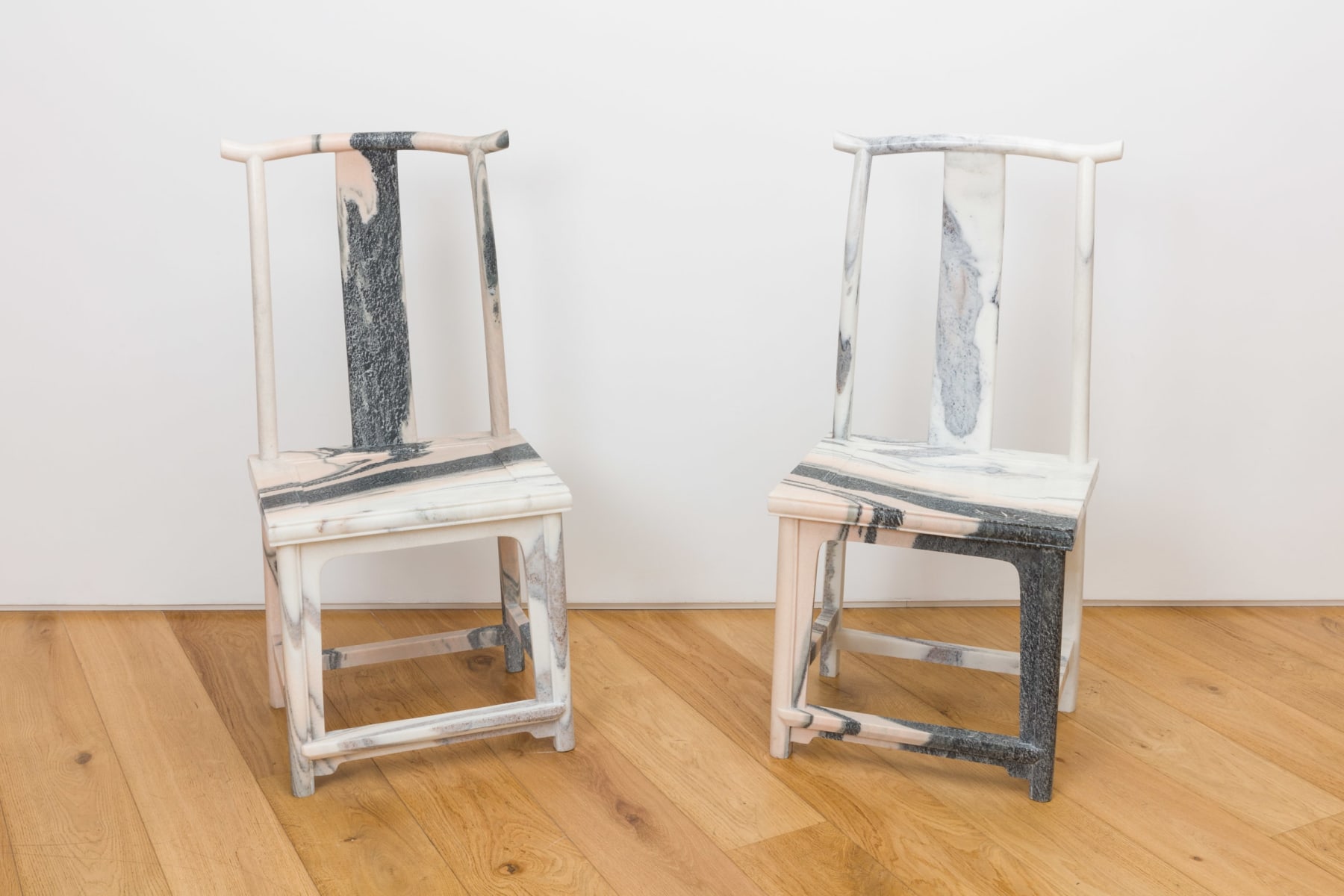Ai Weiwei
Marble Chairs, 2008
Marble
120 x 52 x 46 cm each
47 1/4 x 20 1/2 x 18 1/8 in. each
47 1/4 x 20 1/2 x 18 1/8 in. each
Ai Weiwei’s Marble Chairs from 2008, is a piece that is both contemporary and an evocation of traditional Chinese art. In the 1950s, after being denounced as a rightist, the...
Ai Weiwei’s Marble Chairs from 2008, is a piece that is both contemporary and an evocation of traditional Chinese art. In the 1950s, after being denounced as a rightist, the Chinese government sent Ai’s father, the poet Ai Qi, and his family into exile. The family was allowed to keep very few items, one of them being a traditional yoke back chair. When he returned to China in 1993, after living in the United States for twelve years, Ai’s started collecting Ming and Qing dynasty furniture.
Here, Ai reproduces the everyday chair in precious, fine marble, playing with the connotations that this material carries. In 2011, the artist made a surveillance camera made out of marble titled Surveillance Camera and in so doing, he wittingly and archly brought together contradictions between usefulness and monumentality. Similarly, Marble Chairs conflates East and West by using a material deeply associated with the Western canon of art for a traditional Chinese object. Likewise, he plays with the inherent contradiction of a chair, with all the appearance of being made by wooden joinery, being made from a single piece of stone. In contrast to modest, utilitarian wood, marble is emblematic of high culture, eternity, purity and grandeur. The chair both honours the humble every day and the pinnacle of fine objects, while bridging Eastern and Western traditions.
Here, Ai reproduces the everyday chair in precious, fine marble, playing with the connotations that this material carries. In 2011, the artist made a surveillance camera made out of marble titled Surveillance Camera and in so doing, he wittingly and archly brought together contradictions between usefulness and monumentality. Similarly, Marble Chairs conflates East and West by using a material deeply associated with the Western canon of art for a traditional Chinese object. Likewise, he plays with the inherent contradiction of a chair, with all the appearance of being made by wooden joinery, being made from a single piece of stone. In contrast to modest, utilitarian wood, marble is emblematic of high culture, eternity, purity and grandeur. The chair both honours the humble every day and the pinnacle of fine objects, while bridging Eastern and Western traditions.
LAMB
Copyright The Artist
